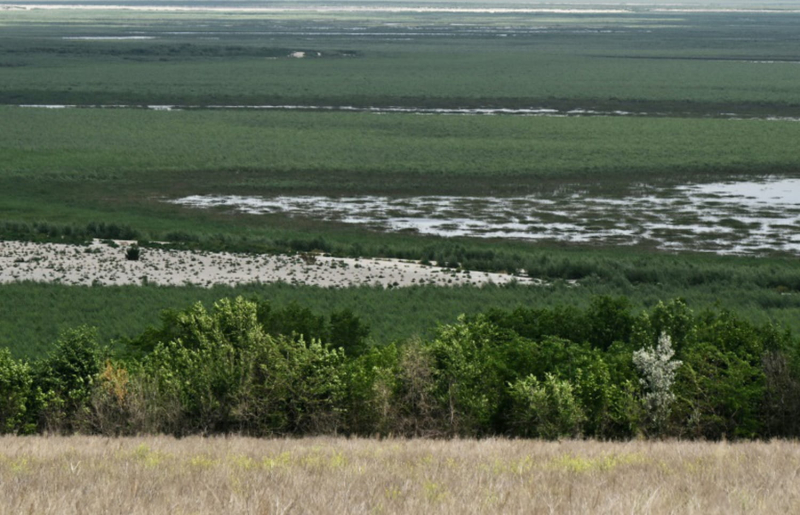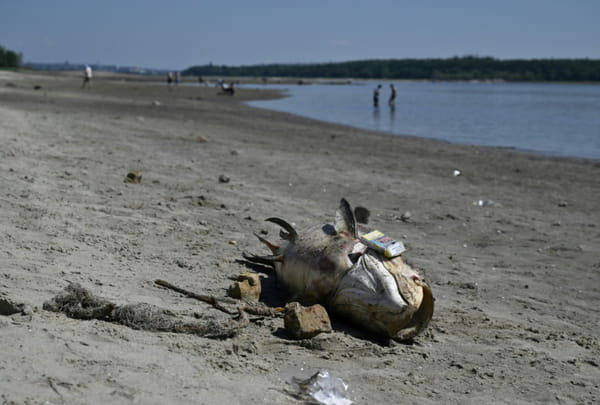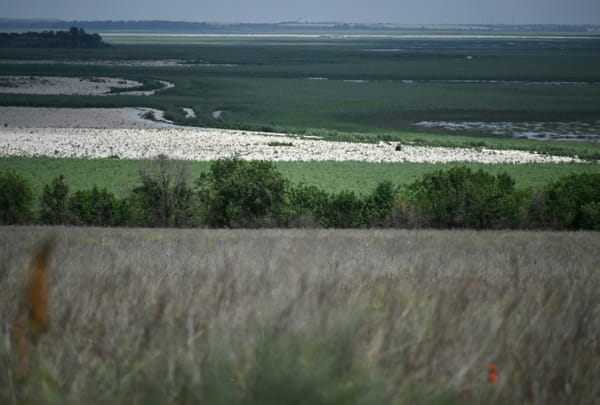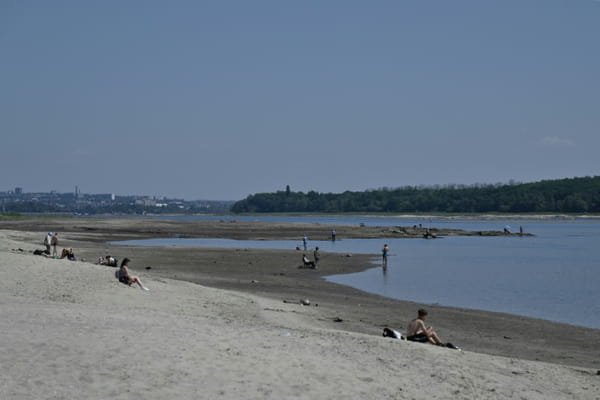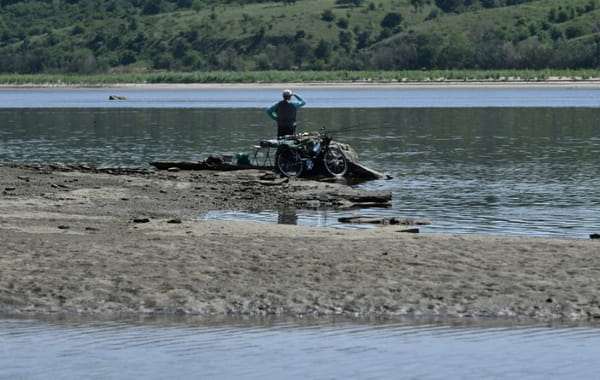"All this vegetation éwas absent before the explosion of the dam" from Kakhovka, said, almost astonished, the Ukrainian researcher Oleksandr Khodosovtsev, surrounded by plants taller than him. The flora of this small park in Kherson, a large city in southern Ukraine facing Russian troops, has come a long way. Like much of the area, it was submerged a year ago. On June 6, 2023, explosions destroyed the Kakhovka dam, located around fifty kilometers upstream and occupied by the Russian army, causing floods and dozens of deaths. Ukraine accuses Russia of having blown up the dam in order to prevent its counter-offensive the following summer, which failed. Moscow blames him for this. At the time, like many experts, Oleksandr Khodosovtsev, professor of botany at Kherson State University, predicted potentially terrible consequences for nature. A dead fish in Zaporizhia, southern Ukraine, on June 1, 2024, on a bank where the waters have receded after the Kakhovka dam exploded a year earlier © AFP – Genya SAVILOV The environmental damage is indeed undeniable. Many animals are killed, plants swept away and chemicals drained by the waters. In the short term, “it was a disaster,” Mr. Khodosovtsev summarizes to AFP. But, after six months, “the vegetation began to regenerate,” analyzes the professor, who goes so far as to speak of a “good thing for nature” in the long term. – Lush vegetation – With a team of Ukrainian scientists, he visited the area several times, although it was located at the center of the fighting because the Dnieper River separates it from the Russian and Ukrainian armies in this part of the country. All the efforts are worth it because, according to him, “no one in the world has ever been able to study the restoration of vegetation on such an enormous surface area”. The banks of the Kakhovka artificial reservoir in the Kherson region of southern Ukraine on June 3, 2024 © AFP – Genya SAVILOV Downstream from the old dam, it is “lush”, like in Kherson Park, boosted by an influx of water and organic matter, he smiles. But the area that worried the experts more is located higher up. The immense artificial Kakhovka reservoir, created at the same time as the dam in 1956, has, logically, lost a lot of water. When scientists first went there, just weeks after the disaster, they found “Martian landscapes” littered with dead shells, Khodosovtsev recalls. This drying out for a time raised fears about the possibility of dust storms. However, the researchers were surprised to note the rapid development of very numerous willows, a sign that nature seems to be taking back its rights. “Today, the Kakhovka reservoir represents 150,000 hectares of green land”, or five times the surface area of Malta, Ukrainian Minister of the Environment Rouslan Strilets told AFP. – Bombs and mines – Seen from a hill bordering it, the old reservoir now looks like a patchwork of green and blue, large expanses of water interspersed with pockets of vegetation. Ukrainians rest on June 1, 2024 in Zajorijia, southern Ukraine, on banks where the waters receded after the explosion of the Kakhovka dam a year earlier © AFP – Genya SAVILOV Expert Anna Kouzemko, who is also part of the group, concedes that carrying out these scientific observations so close to the front is “not easy”. The occupied left bank is inaccessible to Ukrainian researchers, much to their frustration. And the right bank, facing the Russian positions, is dangerous. “Last fall, we were so bombed that we had to leave very quickly”, continues Ms. Kouzemko, from the Institute of Botany. A mine was also discovered 200 meters from the researchers' car. But a scientist is “passionate” when he works, so “he doesn't worry about that which flies around”, enthuses Mr. Khodosovtsev, his gaze exalted. – Unique case in the world – If the Ministry of the Environment estimates the environmental damage caused by the destruction of the dam at 3.5 billion euros, it remains “very difficult to talk about the long-term consequences”, underlines Rouslan Strilets.< /p> “What is happening in the former Kakhovka reservoir is truly a unique phenomenon in the world,” he adds. “The fact is that nature is changing.” A man fishes on June 1, 2024 in Zaporizhia, southern Ukraine, on a bank where the waters have receded since the Kakhovka dam exploded a year earlier © AFP – Genya SAVILOV Ukraine intends to have Russia convicted of ecocide. According to her, dozens of animal and plant species, some of them endemic, are now in danger of extinction. The Ukrainian government also plans to rebuild the Kakhovka dam when it is possible. Ukrainian environmental activists are strongly opposed to this, and instead want to let the ecosystem return to its pre-dam state. Mr. Khodosovtsev hopes his research will help shed light on this debate. “Because the whole world, and Ukraine, are still watching what is happening in the lands of the Kakhovka reservoir,” he says, not without a hint of pride. All rights reserved. © (2024) Agence France-Presse